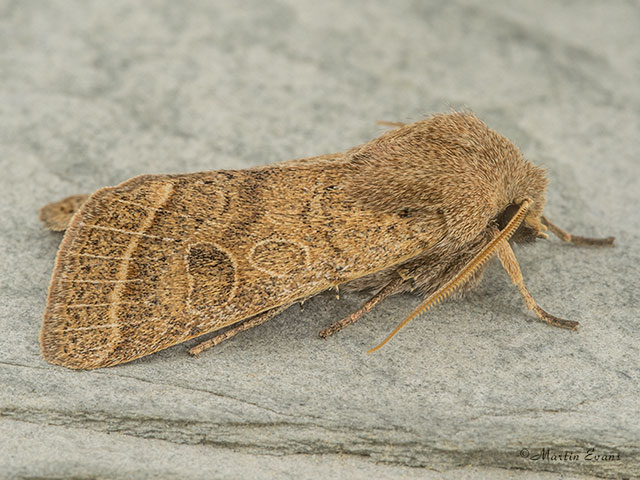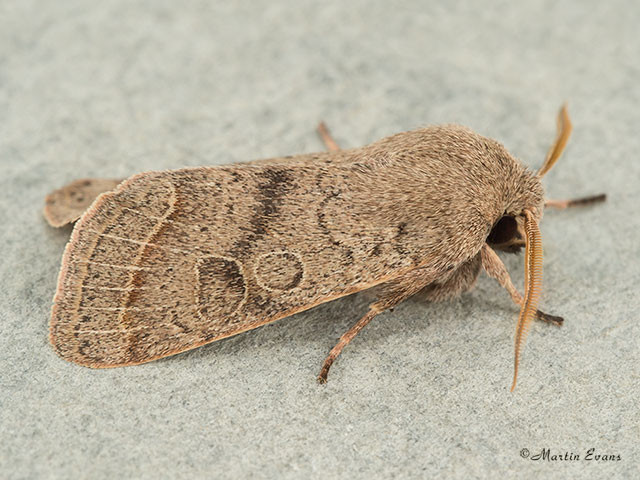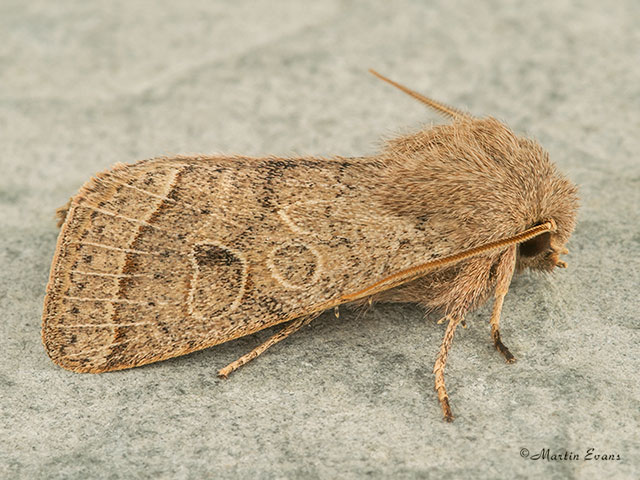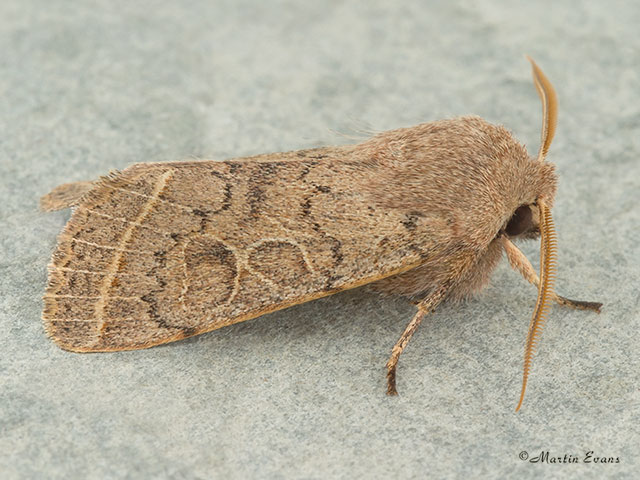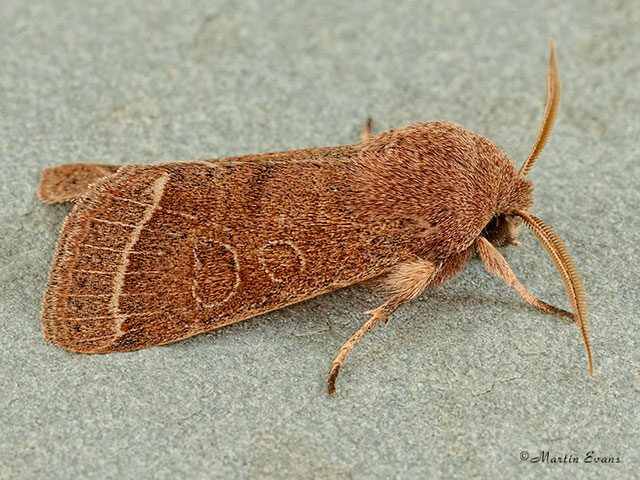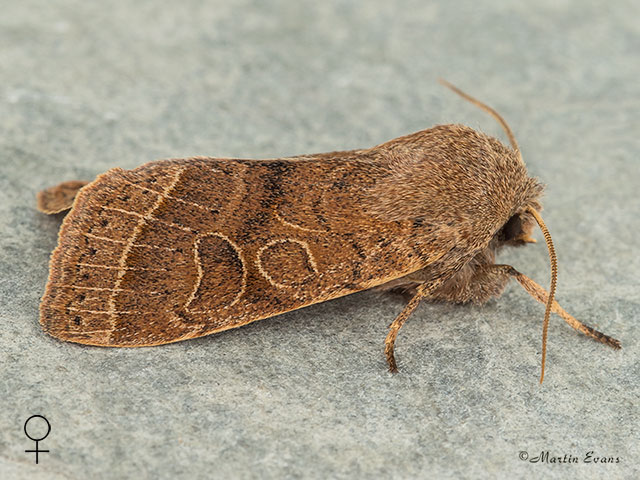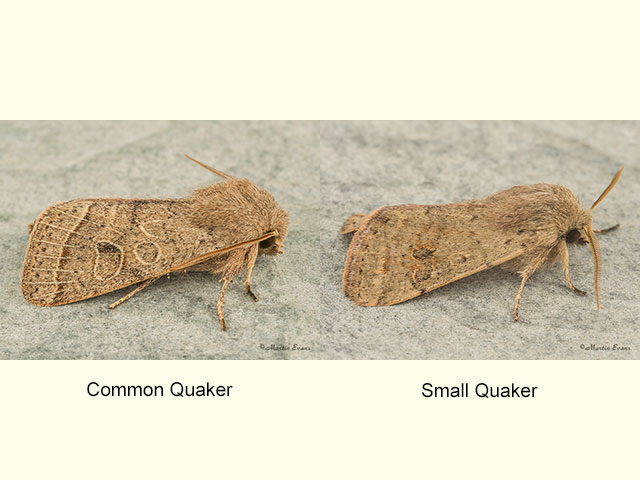Noctuidae
73.244 Common Quaker Orthosia cerasi (Fabricius, 1775)
Common
Similar species: Small Quaker Orthosia cruda is on average smaller (12 to 15mm), has a narrower more indented kidney mark and smaller oval, plus an indistinct outer cross line.
Forewing: 13 to 17mm
Habitats: Deciduous woodland, scrub, hedgerows, parks and gardens.
Habits: The moth visits Blackthorn and sallow blossom and comes to sugar and light.
Foodplant: The small larva feeds in the developing buds, then in the spun shoots and leaves of oaks, sallows, Hawthorn, Silver Birch, Downy Birch, Blackthorn, elms, Hazel and other deciduous trees. It rests under a leaf in the last instar. It pupates in a cocoon under the soil, resting inside the pupal case as a fully formed adult until it emerges in the spring.
On the European mainland it has also been recorded feeding on Beech, limes and willows.
